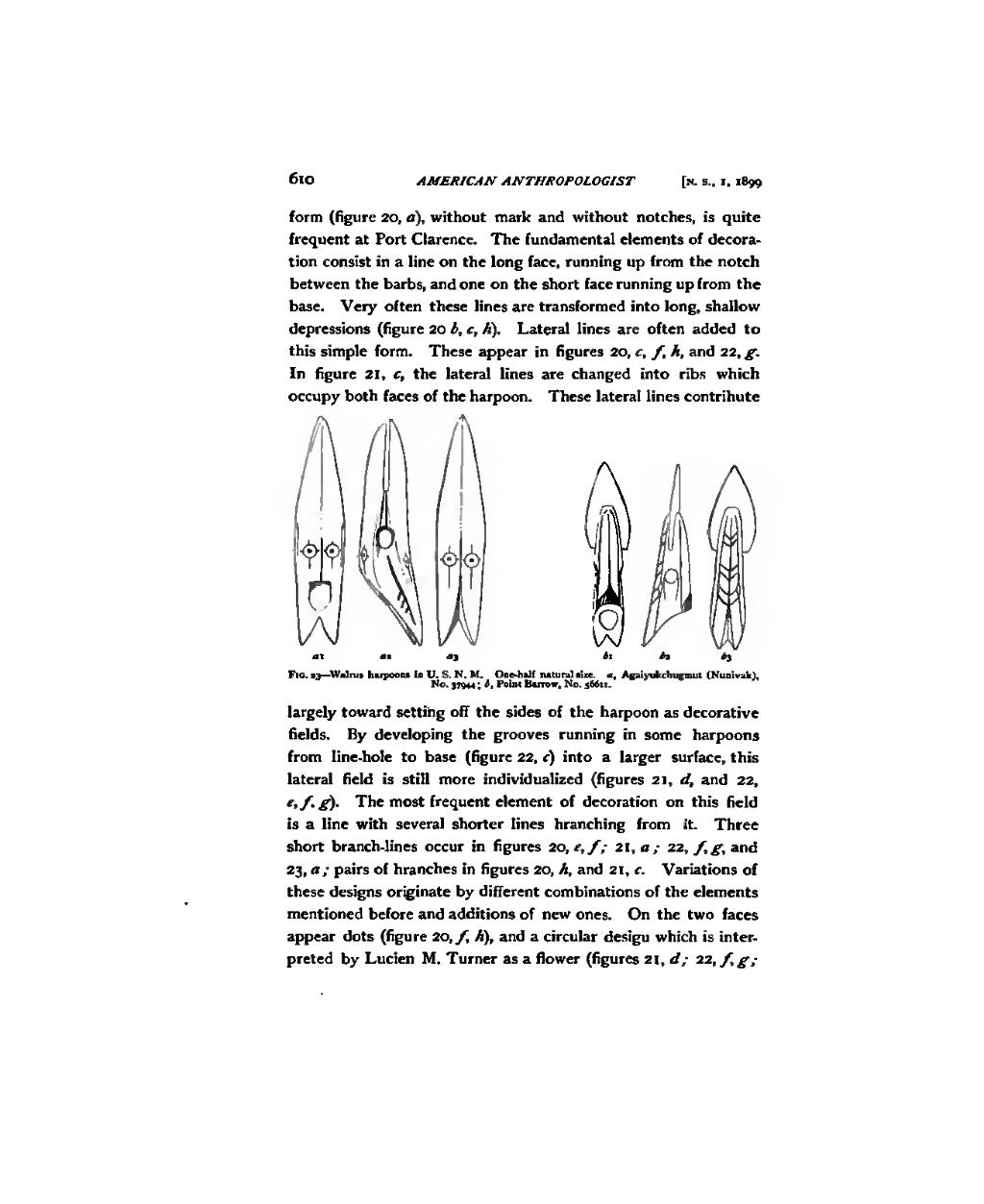6io
��AMERICAN ANTHROPOLOGIST
��[N.
��form (figure 20, a), without mark and without notches, is quite frequent at Port Clarence. The fundamental elements of decora- tion consist in a line on the long face, running up from the notch between the barbs, and one on the short face running up from the base. Very often these lines are transformed into long, shallow depressions (figure 20 b, c, A). Lateral lines are often added to this simple form. These appear in figures 20, c, f, h, and 22, g. In figure 21, c, the lateral lines are changed into ribs which occupy both faces of the harpoon. These lateral lines contribute
���FlG. aj— Walmi hupOOl
��(Nunivak),
��largely toward setting off the sides of the harpoon as decorative fields. By developing the grooves running in some harpoons from line-hole to base (figure 22, c) into a larger surface, this lateral field is still more individualized (figures 21, d, and 22, e, f. g). The most frequent element of decoration on this field is a line with several shorter lines branching from it. Three short branch-lines occur in figures 20,e,f; 21, a; 22, f,g, and 23, a; pairs of branches in figures 20, h, and 21, c. Variations of these designs originate by different combinations of the elements mentioned before and additions of new ones. On the two faces appear dots (figure 20,/, //), and a circular design which is inter- preted by Lucien M. Turner as a flower (figures 21, d; 22, f, g ;
�� �
